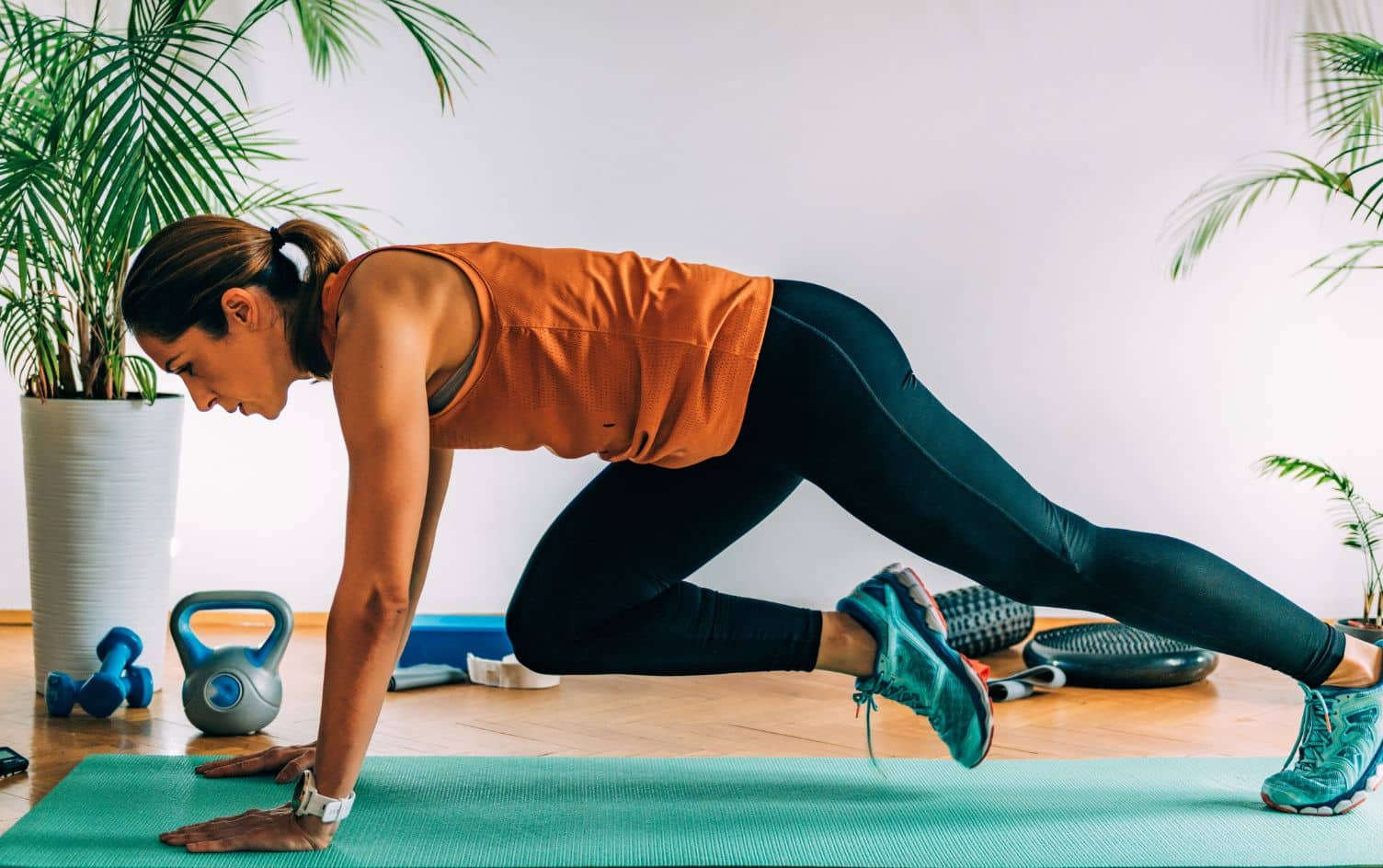The pelvic floor isn’t a body part we necessarily think much about. But, if you’ve ever given birth, you’re definitely familiar with it. Even if you haven’t, it’s worth learning about.
“The pelvic floor refers to the muscles and tissues that make up the bottom inside of the pelvis,” explains Melissa Dowling, a physical therapist and trainer. “Imagine the pelvis being a bowl. The pelvic floor is the bottom of that bowl. It acts as a sling to support our organs and makes up the bottom part of our core system.” So basically, it supports everything in your abdomen.
Here’s the really cool thing: By strengthening your pelvic floor and learning how to use it in exercise and in everyday life, you can get stronger, and in some cases, feel better.
WHY CARE ABOUT YOUR PELVIC FLOOR?
“Every person has a pelvic floor, and just like any other muscle in the body, it must be routinely stretched and strengthened to maintain its function,” notes Kendra Coppey Fitzgerald, a postpartum corrective exercise specialist, trainer and yoga teacher. The pelvic floor is like the foundation of your core, she says, and therefore your entire body.
“When you know how to use your pelvic floor well, your foundation is solid and strong. If your pelvic floor foundation is weak or unstable, the rest of the body will create compensation patterns to make up for that weakness,” Fitzgerald adds.
What does that look like? “If your pelvic floor is weak or tight, you can develop urinary incontinence, which is when pee leaks out without you being able to control it,” Dowling says. “It can range from just a dribble to complete loss of control, causing wet pants.” You might not think that’s an issue, but a surprising number of people experience urine loss during exercise. “Some people even skip out on exercises like jumping jacks, box jumps, running and burpees because of leaking, which can be very frustrating.”
But working on your pelvic floor can help alleviate these issues. “Some major benefits of learning how to use your pelvic floor are better core strength, fewer episodes of leaking or peeing when you laugh, sneeze, cough or jump, faster healing of diastasis recti (abdominal separation, usually after pregnancy), and better (or less painful) sex,” Fitzgerald says.
And yes, men have a pelvic floor, too. “Men who focus on pelvic floor training can have better athletic endurance and speed, less back pain from having a stronger core, overall better fitness, and better sex, too,” Fitzgerald notes. “I like to think of the pelvic floor as the secret door to the next level of fitness in everyone. Once you enter into well-rounded pelvic floor training, you can unlock new levels of fitness from your foundation up.”
PELVIC FLOOR EXERCISES
You may have heard of kegels before, but it turns out, “squeezing” your pelvic floor is just one part of making it stronger. You need both a contraction and a release to use it properly, Fitzgerald says. “Most often, we forget about the release, which can lead to an overactive, tight and weak pelvic floor. A tight pelvic floor can’t contract as much as it should if it can’t also lengthen. Sometimes ‘strength’ in the pelvic floor is gained by learning to relax it correctly.”
Here, four exercises to help you do that.
1. PELVIC FLOOR BREATHING
By learning pelvic floor breathing, you can practice using your pelvic floor in virtually any exercise, as well as in everyday life.
The move: First, grab a stability ball. Sitting on top of it, inhale and release the pelvic floor out, then exhale and squeeze and lift the pelvic floor in and up. Do two sets of 10 breaths before every workout.
2. DEADLIFTS/HIP HINGES


“This is one of my favorite exercises because it’s a great way to integrate your pelvic floor training into your day-to-day life,” Fitzgerald says. We are constantly bending over and picking things up, and every time you do so, it’s a chance to practice your pelvic floor engagement.
The move: Hinging at the hips (not at the waist), inhale and release the pelvic floor as you bend over, then exhale as you squeeze and lift the pelvic floor and stand up using your glutes. Do three sets of 10 reps each.
3. PELVIC FLOOR BALL SQUEEZES
According to Fitzgerald, this exercise is great for those who have a difficult time feeling a contraction in their pelvic floor.
The move: Lay on your back with your knees bent and feet flat on the floor, then place a small ball (5–6 inches in diameter) between your knees. Inhale and release the pelvic floor, then exhale and gently squeeze the ball with your inner thighs as you squeeze and lift the pelvic floor. Do two sets of 15 breaths each.
4. SQUATS

“Squatting is an amazing exercise for improving pelvic floor strength,” Dowling says.
The move: Use the same breathing techniques outlined above, inhaling as you squat, exhaling as you stand back up. Start without weight, and if you can perform these without leaking or pain, move on to goblet squats. Do three sets of 10–15 reps each.
WHEN TO SEE A PROFESSIONAL
Though there’s a lot of work you can do on your own to get your pelvic floor working properly, there are some situations where you’ll need expert help.
“If you feel heaviness in your pelvic floor (like something is falling out of your body), have consistent leaking all the time or in the middle of exercising or have pain in your pelvis or groin, visit a pelvic floor physical therapist (PT) or occupational therapist (OT),” Fitzgerald advises. “All women who have had a baby (both vaginal birth and cesarean section births) should schedule a few visits with a pelvic physical therapist to be evaluated before starting back to exercise postpartum.”




